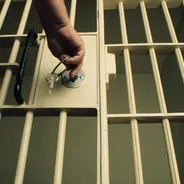A pair of homeowners realised they had a bee problem - and after trying to eradicate the beehive using conventional methods - ultimately called upon The Bartlett Bee Whisperer, also known as David Glover.
The expert in moving bee colonies travelled to the couple's house in Germantown, Tennessee, to locate the beehive. "Every once in a while I get a call that makes me cringe," Glover wrote on his Facebook page.
[[facebookwidget||https://www.facebook.com/photo.php?fbid=1777134365661300&set=a.310256645682420&type=3]]
Glover opened a hole in the brick wall of the house, and found a massive honey comb. After using a heat monitor on the wall where the hive was, he was shocked to discover the actual size of the hive.
He discovered the entrance behind the bricks in the wall through a weep hole and through a gap in the bricks in the corner under a window. And the task proved to be quite the challenge.
"I prefer to be minimally invasive when removing honey bees from buildings. I don’t like taking out bricks. Will the mortar chip out, or will the bricks crumble?" As bees can be territorial, Glover chose to use smoke to calm the bees down. Bees associate smoke with fire, putting them in survival mode and sedating them, rather than being in attack mode.
Glover then proceeded to remove the entire hive, which contained two flat combs.
"This is one of the largest single pieces of comb I’ve ever seen!" Glover continued.
"Removing a slice of brood comb holding seven of the thirteen queen cells. On the eft side of the hive I found a large number of dead bees. I assume this is where the pest control applicator tried to kill the colony. The wax prevented the spread of the pesticide."
"The comb wasn't overly-attached to the bricks. With the exception of seven narrow honey combs in the center top of the hive, this was two large flat combs."
It reportedly took the bees around two years to build the hive. And it took Glover around five hours to finish the job, and his team then put the bricks back in place.
"The brood combs’ bees were repurposed into a new hive,” Glover continued. "Think forced evacuation but you get to keep the furniture. They are still in my backyard and appear to have adjusted to their new accommodations."
Glover says he talks to the bees, and that's where he gets his moniker - The Bee Whisperer - from.
"I talk to the bees as I work," he asserted. "I know they don’t understand English, but helps me stay calm."
Well done to David!












